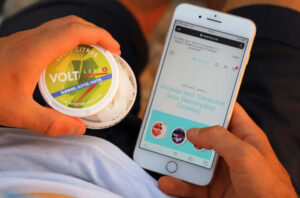
Ways to Make Your Website Mobile-Friendly
Are you looking to make your website more mobile-friendly? If so, you’re in luck. There are several ways to do this, and we’ll outline them for you in this post. We also recommend visiting Pittsburg Better Times to learn more about designing a mobile friendly website. Keep in mind that making your website mobile-friendly is important for your users and can also help improve your search engine rankings. So read on to find out more.
Make Your Site Responsive
The most important thing you can do to make your site mobile-friendly is to make it responsive. Responsive design means that your site will automatically adjust to fit any device’s screen size, whether it’s a phone, tablet, or computer.
Think About the Information Your Prospective Clients Need
 When you design your mobile site, think about the information your clients are looking for when they visit your site. Mobile users are typically looking for quick, easy-to-find information. Some common examples include:
When you design your mobile site, think about the information your clients are looking for when they visit your site. Mobile users are typically looking for quick, easy-to-find information. Some common examples include:
- Your business address and phone number
- Hours of operation
- Directions to your location
- A list of services you offer
- A way to contact you (e.g., email, online form)
If your business has a brick-and-mortar location, it’s also important to include information that will help mobile users find you when they’re in the area. For example, you might want to have a map of your location and nearby landmarks.
Avoid Flash
One of the most common mistakes made for mobile-friendly websites is using Flash. While Flash can make your website look sleek and professional, it doesn’t work on most mobile devices. In fact, Flash is not supported by Apple’s iPhone or iPad, which means that a large portion of your potential audience will be unable to view your website if it uses Flash. Instead of using Flash, try using HTML5. HTML5 is a more modern coding language that is supported by all major browsers and mobile devices. It allows you to create websites that look just as good as those made with Flash but without compatibility issues.
Pay Attention to Button and Font Sizes
One of the most important things to remember when designing your mobile website is button and font sizes. You want to make sure that your buttons are large enough to be easily clicked on by mobile users and that your fonts are legible and easy to read.
Compress Images
One of the key ways to make your website load faster on mobile devices is to compress your images. Image compression can significantly reduce the size of an image file without any noticeable degradation in quality. This can be a huge benefit for loading time, particularly if you have a lot of images on your website. There are many ways to compress images, including a Photoshop plugin or an online tool like TinyPNG.
Test Mobile and Desktop Versions of the Site
 The first step is to test your website’s appearance on mobile and desktop devices. You can use Google’s Mobile-Friendly Test tool to see if your site meets the minimum requirements for a good mobile experience.
The first step is to test your website’s appearance on mobile and desktop devices. You can use Google’s Mobile-Friendly Test tool to see if your site meets the minimum requirements for a good mobile experience.
If you haven’t already, it’s time to make your website mobile-friendly. Mobile traffic has surpassed desktop traffic in many countries, so not having a mobile-friendly site will only hurt your business. We can help you switch and ensure that your website looks great and performs well on all devices. Contact us today to get started.
